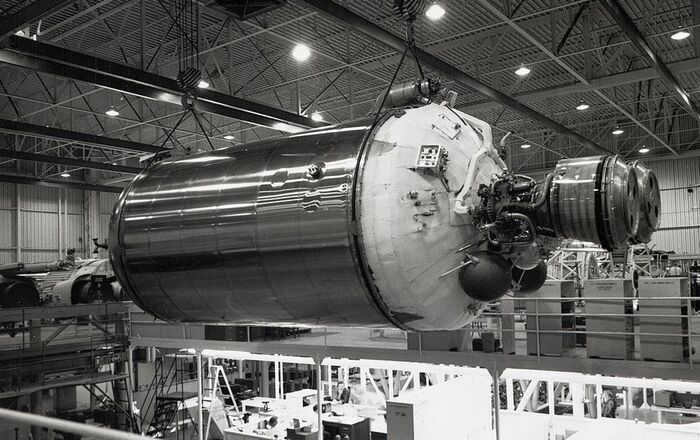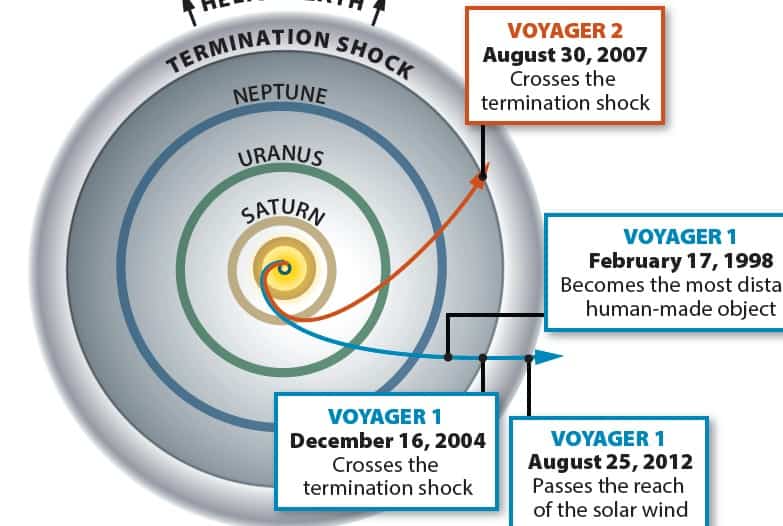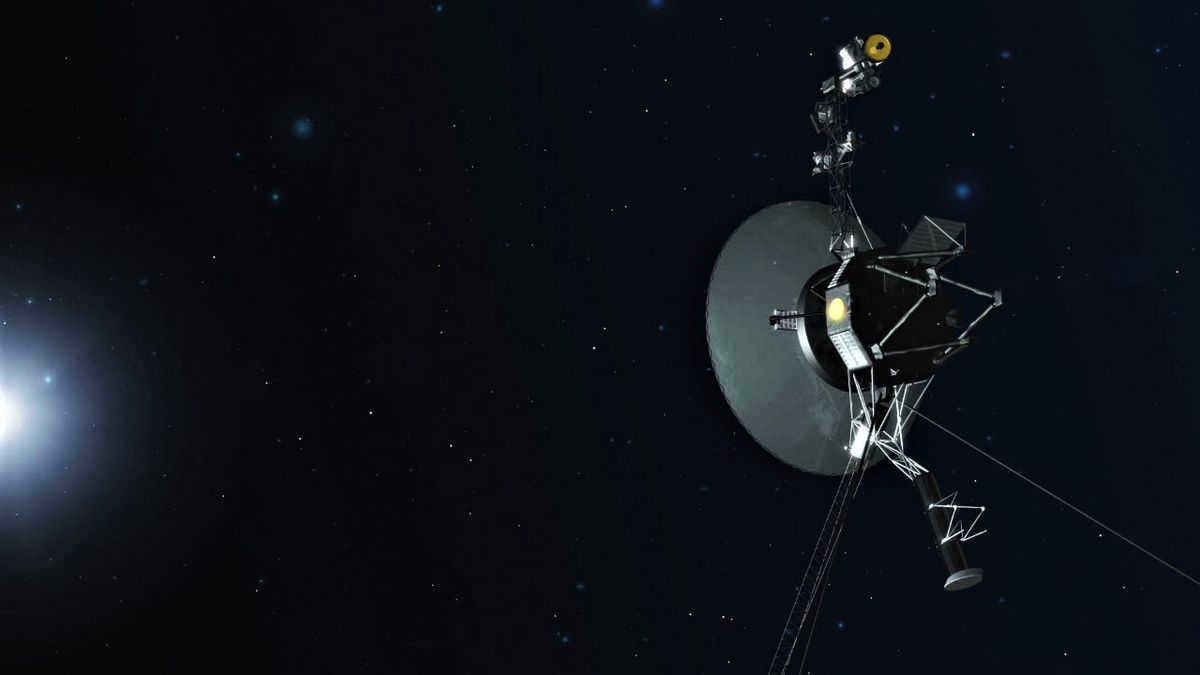
Four decades ago, scientists from Earth launched two spacecraft on an ambitious journey, which were given the names Voyager 1 and Voyager 2. These spacecraft are essentially the same, with the only difference being their names and launch dates.
Voyager-2 was sent off on August 20, 1977, while its counterpart was launched on September 5 of the same year. We still have a couple of weeks to go until the fortieth anniversary of Voyager 1. There is no confusion with the numbering of the probes, as it was originally planned for Voyager-1 to surpass its twin. And indeed, that’s what happened: the probe with the number one managed to overtake Voyager 2 between the orbit of Mars and the asteroid belt.
The two stations followed different paths, enabling them to achieve a significant feat. “Voyager 1” currently holds the record for being the most distant human-made object from our planet. On the other hand, Voyager 2 holds the distinction of being the first and only probe to have successfully explored four gas giant planets in our Solar System: Jupiter, Saturn, Uranus, and Neptune.
Not only is “Voyager 1” the farthest man-made object from Earth, but it is also the fastest. It travels at a speed of 17 kilometers per second. Currently, it is located at a distance of 139 astronomical units, which equates to a staggering 21 billion kilometers. The flight data for both Voyager missions is regularly updated and can be accessed on a dedicated page maintained by NASA’s Jet Propulsion Laboratory.
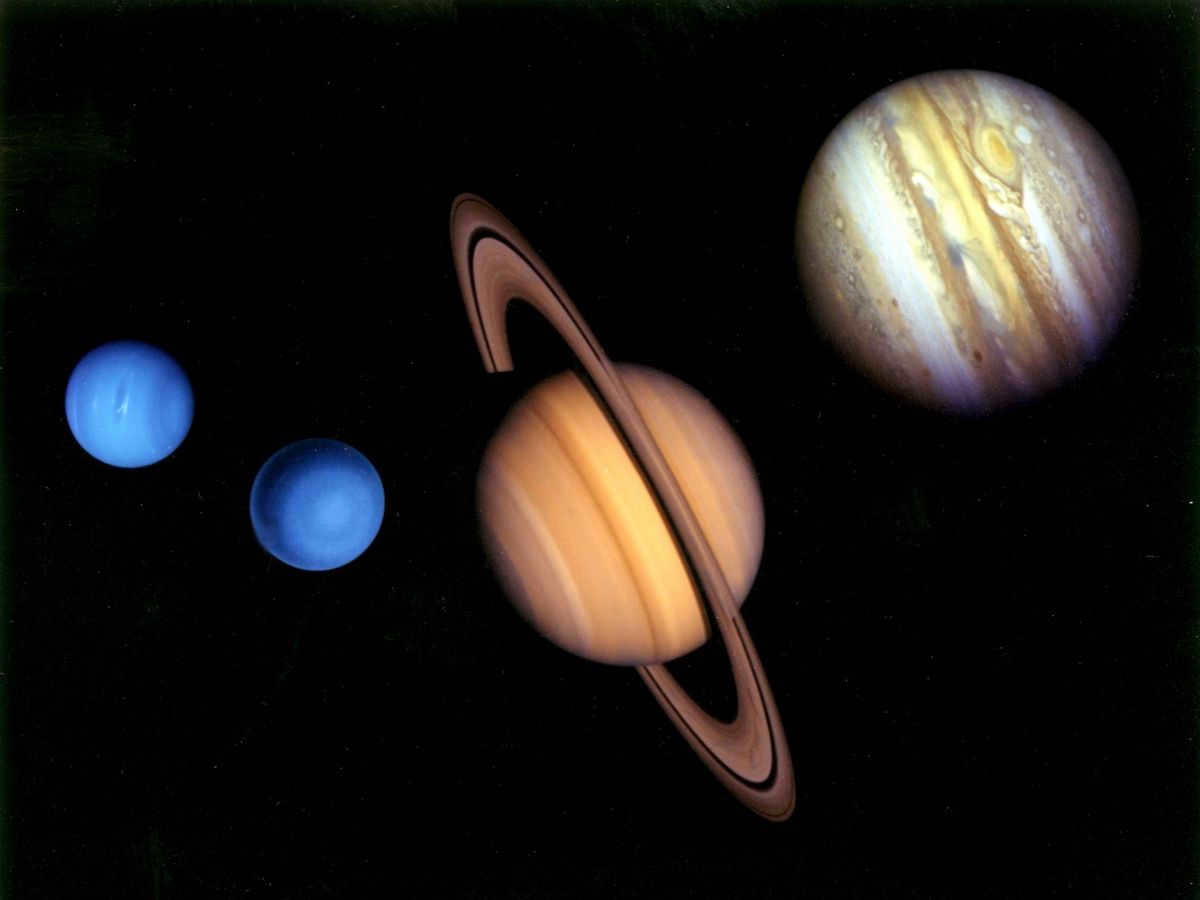
Extent of the solar system
Voyager 1 is reported to have traversed the boundaries of the solar system. This occurrence has taken place on multiple occasions. Scientists have proclaimed on several occasions that the spacecraft has “undeniably” departed from our system, only to later discover that this is not accurate after all.
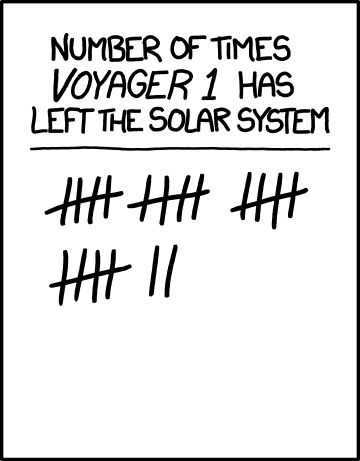
A comic strip by xkcd made a humorous remark about the challenge of determining space records. The number of instances Voyager 1 has ventured beyond the confines of our solar system, xkcd:1189
The boundaries were crossed in 2012. During that period, the spacecraft entered the heliopause region, where the pressure from the solar wind is in equilibrium with the pressure from the interstellar medium. The heliosphere itself is an area in close proximity to the sun, where the solar wind still has dominance over the “galactic wind” – the stream of particles originating from the interstellar medium.
In 2013, there were multiple reports suggesting that Voyager 1 had traveled beyond the influence of the Sun, and confirmation came in September of that same year.
It is worth mentioning that when scientists mention the device leaving the system, they are specifically referring to the heliosphere. As for venturing beyond the orbits of celestial bodies that orbit the Sun, that has not occurred thus far. The probe has not even reached the orbit of Sedna, a trans-Neptunian object, let alone the Oort cloud. This cloud, which is home to long-period comets, is widely regarded as the outermost boundary of the solar system.
Gaining Velocity
To achieve the necessary velocity, the vehicles were propelled into motion using a powerful Titan 3E rocket equipped with an extra fourth stage. The initial two stages were powered by a combination of nitrogen tetraoxide and aerosine. The third stage utilized liquid hydrogen and oxygen, while the fourth stage relied on solid propellant.
Characteristics of the probes
Scientists have taken into consideration the fact that in a few years after the launch of the “Voyagers,” the solar panels will not be able to generate enough energy to power all the systems. As a result, each spacecraft is equipped with three radioisotope thermoelectric generators, which had a power output of 470 watts at the time of launch. However, due to the natural decay of the radioactive material, the power output has already decreased to about 300 watts. Over time, it is expected to continue to decrease. It is anticipated that in a few years, the energy received by the probes will no longer be sufficient for normal operation, and the systems will have to continue their journey in complete radio silence.
The devices are designed to accommodate three different types of computers. The initial type is utilized for the management and operation of scientific instruments and tools, the second type is dedicated to flight control, and the third type is specifically designed for command functions. To ensure redundancy and backup, two computers of each type are installed.
Progress on the Voyager project remains ongoing (July 9, 1976), NASA
Four decades ago, the designers responsible for creating the probes had a goal of establishing communication with extraterrestrial beings. The project’s creators included a message from the people of Earth within the spacecraft.
The primary point that scientists sought to convey in the message was the Earth’s location. To accomplish this, they devised a specific map featuring prominent landmarks known as pulsars. In total, there are fourteen pulsars, each possessing distinct characteristics. Should an extraterrestrial civilization intercept Voyager (any variant), they would be aware of these pulsars. Given that each pulsar has existed for millions of years, they serve as a reliable beacon that will continue to function for an extended period. Even in a million years, an alien intelligence could determine the Earth’s whereabouts. It is possible that some pulsars may endure for billions of years. These celestial bodies rotate rapidly and emit a unique pattern of electromagnetic radiation pulses, with the time intervals between pulses also being distinct. Consequently, pulsars have been regarded as “cosmic beacons” and incorporated into the pulsar-based map.
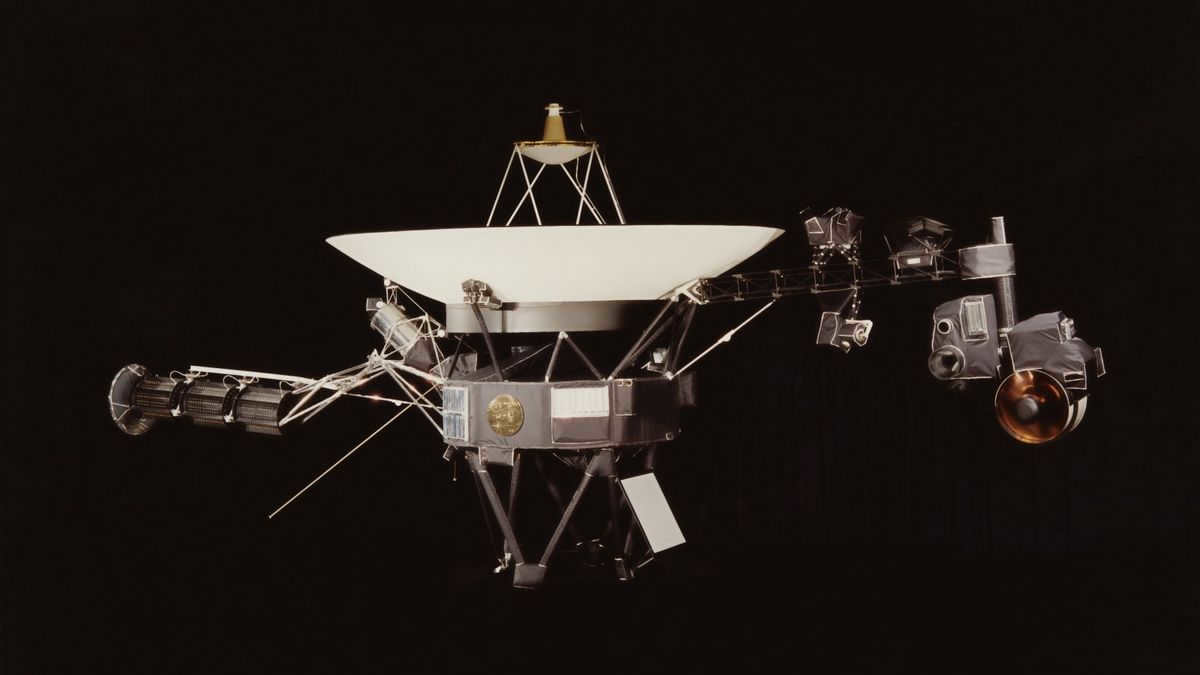
The distance between each pulsar and the Sun, which is the central point on the map, is represented by the length of the connecting lines. The pulsars’ rotational speed is encoded in binary format, condensing all the information into only 12 characters. Apart from indicating the position of Earth, this map also offers clues about the exact time of the probe’s launch.
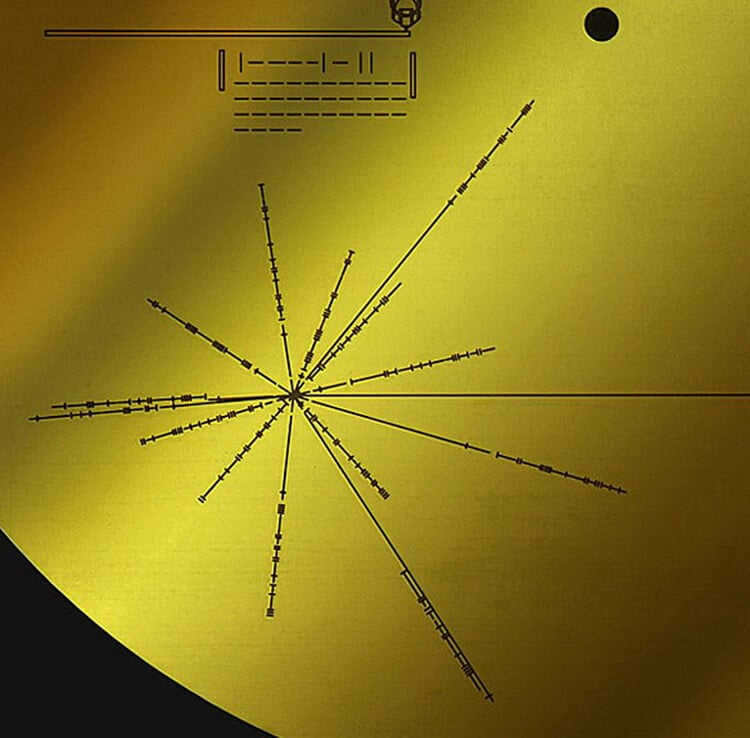
“Voyagers” – posing a danger to Earth?
As previously mentioned, an increasing number of individuals are now of the opinion that the Voyagers pose a threat to humanity, as they carry information regarding the precise location of Earth. This data could potentially be utilized by extraterrestrial intelligence, for instance, to launch an attack on our planet.
Why did scientists still choose to send a map and a gold plate containing information about life on Earth and the human race? Francis Drake explains that at the time of the Voyagers’ launch, scientists were unsure if there were any other planets beyond our solar system. To be more precise, the majority of experts believed in their existence, but lacked concrete evidence.
Thanks to the Kepler telescope, scientists now have knowledge that exoplanets are common in the universe, rather than rare, and there is also a substantial number of planets similar to Earth. As a result, it is possible that life in space is not an exception, but rather the norm.
However, due to our lack of understanding about what could exist “out there,” it would be imprudent to send any information about ourselves. Recently, Drake expressed his viewpoint, stating, “During those years, most individuals I conversed with were optimistic, believing that if extraterrestrial beings existed, they would likely be friendly. No one considered the possibility that our actions could potentially be hazardous.”
Nevertheless, according to Drake, the chances of the maps aboard the probes reaching a civilization from another planet are incredibly low. “These probes are traveling at a staggering speed of over 10 kilometers per second. At this rate, it would take them approximately half a million years to reach the nearest star. And even after that, it would take another half a million years to reach another star. Furthermore, it is evident that they are not on a specific trajectory towards any particular celestial body. They are simply moving in the direction they were launched.”
Drake believes that if extraterrestrial beings were to discover Earth, it would most likely be through picking up radio signals and other indications of our advanced civilization. In contrast, the probes themselves are likely to continue drifting silently through the vastness of the Universe, remaining undetectable for millions of years.
At present, the instruments continue to function, indicating that they are still transmitting valuable information to Earth regarding the characteristics of deep space.
Therefore, the Voyagers remain a positive asset rather than a negative one. They have contributed greatly to our knowledge and have not caused any significant harm to humanity’s message.
With its launch occurring 44 years ago, Voyager 1 now resides within the interstellar medium. Throughout its journey, the spacecraft’s instruments have successfully captured a consistent signal of plasma waves resulting from the interaction between the interstellar medium and the stellar wind, as well as made various other notable discoveries. In this article, we will explore the extent of Voyager 1’s travels and determine whether it has truly departed the solar system.

For the past 44 years, Voyager 1 has been transmitting information from its instruments back to Earth. As an illustration, it has provided scientists with the ability to “listen” to the signal of the interstellar medium, providing insights into the interaction between this medium and the solar wind. Let us delve into the details of this remarkable device and explore the vast distances it has traversed in outer space.
“What type of spacecraft is Voyager 1?”
“Voyager-1” is an unmanned spacecraft developed by NASA, which was sent into space from Cape Canaveral in 1977. Its main objective was to conduct research on Jupiter and Saturn – it was expected to function for a few years before its systems were no longer deemed reliable. However, both Voyager 1 and Voyager 2 have surpassed scientists’ expectations and have been operational for over 40 years – far exceeding their initial estimated lifespan. They have ventured far, surpassing Uranus and Neptune long ago, and have even ventured beyond the orbit of Pluto. Now, with no other celestial bodies in their path, the probes are investigating the cosmic environment that surrounds them. Although it may appear empty, this space is actually filled with various particles, including hydrogen and helium nuclei that have been expelled by the Sun in all directions – this is known as the solar wind.
First launched in September 1977, the Voyager 1 spacecraft completed its flybys of Jupiter in 1979 and Saturn in late 1980. With a velocity of approximately 61,200 kilometers per hour, Voyager 1 successfully crossed the heliopause, the boundary between our solar system and interstellar space, in August 2012. Upon entering interstellar space, the spacecraft’s instruments detected disturbances in the gas. However, amidst these energetic outbursts caused by our own Sun, scientists managed to identify a consistent signature produced by the rarefied vacuum of space. Experts often liken the activity of the interstellar medium to a gentle drizzle: its sound is barely perceptible and occasionally overshadowed by the thunderous roar of solar flares.
This image captures Voyager 2’s unexpected encounter with Neptune’s moon Triton in 1989. At that time, nobody anticipated the spacecraft venturing so far from home.
Scientists have made a unique discovery based on the data collected by Voyager 1. According to their findings, the level of activity in interstellar gas is actually lower than previously believed. This new information is significant because it enables researchers to effectively track the spatial distribution of plasma when it is unaffected by solar flares. The study also provides valuable insight into the changing density of interstellar space as it transitions from the outer reaches of our solar system to the vast expanses of deep space.
Furthermore, this research sheds light on the interactions between the interstellar medium and the solar wind. It helps scientists better understand the formation and alteration of the solar system’s protective heliospheric bubble due to the influence of the interstellar medium.
Current Location of Voyager 1
Contrary to numerous media reports suggesting that Voyager 1 has already departed from the solar system, the reality is quite different. According to NASA experts, even if the spacecraft continues to function for several more years, or even decades, it will still remain within the boundaries of our solar system. Moreover, even in the highly unlikely scenario where the Voyagers continue to operate indefinitely, it would take them approximately 30,000 years to reach the outermost edge of the solar system.
However, at this stage, Voyager 1 has successfully moved far enough away. Back in August 2012, the spacecraft discovered the edge of the heliosphere using their instruments. The heliosphere is a region in close proximity to the Sun, where the solar wind prevails over other charged particles and moves at supersonic speeds relative to the Sun. Astonishingly, it was determined that the edge of the heliosphere is approximately 18 billion kilometers away from the Sun. In 2018, NASA finally made the announcement that Voyager 2 had also exited the heliospheric bubble, entering the interstellar medium. This medium is situated between the “stellar wind bubble” regions of our Sun and neighboring stars. In November 2019, Nature Astronomy published multiple papers regarding Voyager’s observations of the environment beyond the heliosphere. These observations are unprecedented and completely unexpected, originating from the spacecraft’s instruments which were not initially anticipated to withstand such conditions. Prior to this, scientists were unaware of the heliosphere’s boundary and how the quantity of cosmic rays fluctuated outside of it.
September 5, 1977 saw the commencement of the United States’ Voyager 1 mission, a mere 16 days following the launch of Voyager 2 (yes, you read that correctly, the latter was actually launched before the former). Originally intended to investigate Jupiter and Saturn, Voyager 1 has long since completed its primary objectives and has since ventured much deeper into space to embark on a secondary mission – the exploration of distant realms within our solar system.
Now, after an incredible 44 years, Voyager 1 continues to forge ahead, traversing the vast expanse of space.
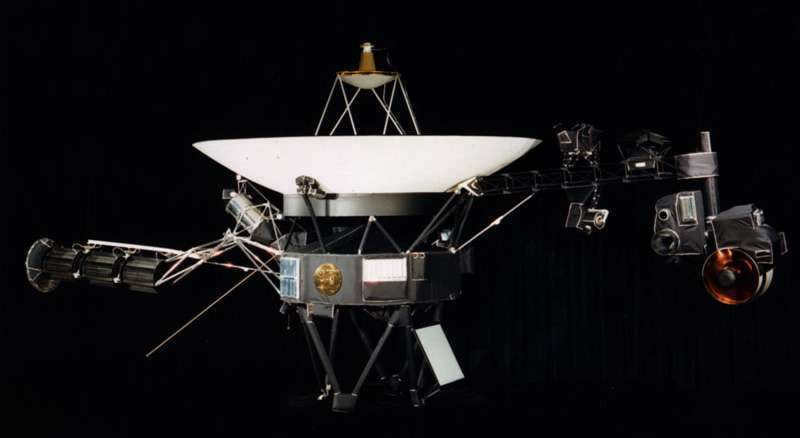
Why Voyager 1’s Importance and Achievements, and the Mystery of its Lack of Image Transmission for Three Decades
– In 1979, Voyager 1 captured detailed images of Jupiter, marking a significant milestone in its mission. Additionally, it made a groundbreaking discovery by identifying the first active volcanoes outside of Earth, located on Jupiter’s moon, Io.
– In 1981, Voyager 1 reached Saturn and made an extraordinary revelation by unveiling three of its moons: Atlas, Prometheus, and Pandora.
– Originally designed for a five-year mission, Voyager 1 surpassed all expectations. After careful calculations, scientists determined that the mission could be extended. Consequently, in 1982, they made crucial adjustments to Voyager 1’s engines, enabling it to venture as far away from Earth as possible, with the ultimate goal of venturing beyond the boundaries of our solar system.
– In 1990, Voyager 1 captured the final photographs of our solar system. These images, known as “family pictures,” depict Venus, Earth, Jupiter, Saturn, Uranus, and Neptune orbiting the Sun. This marked the beginning of Voyager 1’s interstellar mission.
– By 1998, Voyager 1 had surpassed the distance traveled by Pioneer 10, another NASA probe, making it the farthest man-made object from Earth.
– In 2005, Voyager 1 crossed the boundary where the shock wave from the collision of solar and interstellar winds dissipates. Since then, the data transmitted by Voyager 1 has been unreadable by Earth computers. NASA has decided against activating the cameras, as it would significantly drain Voyager’s energy reserves.
– Voyager 1 made its historic entry into interstellar space in 2012, marking the first time a human-made object had ever achieved such a feat. Following this milestone, the probe conducted precise measurements of plasma within interstellar space.
– In 2017, NASA engineers took the unprecedented step of activating Voyager 1’s engines after 37 years of dormancy. This maneuver was performed to correct the probe’s trajectory and extend its operational lifespan.
– Fast forward to 2021, and Voyager 1 made yet another groundbreaking discovery. The probe detected a faint but constant hum originating from fluctuating plasma waves. This revelation has led scientists to realize that interstellar gas harbors more active processes than previously believed, surpassing those found in the solar wind. For the first time in human history, scientists can now accurately estimate the characteristics of interstellar plasma, rather than relying on approximations and assumptions as before.
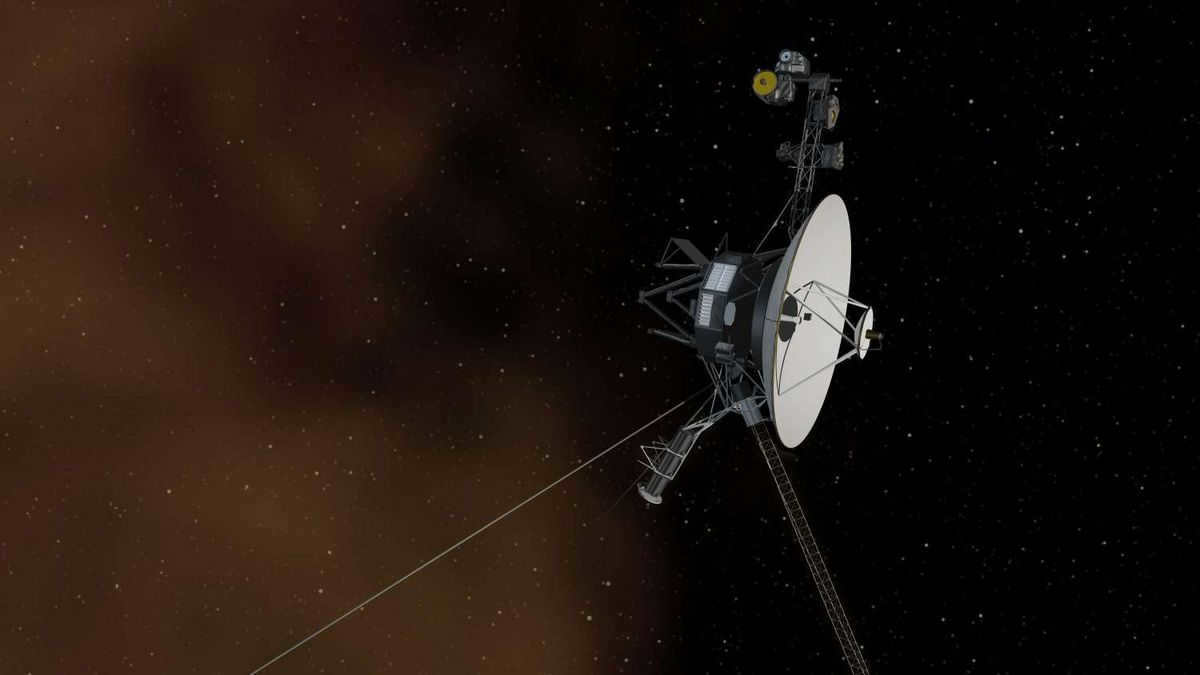
Voyager 1’s Current Location
The official website of NASA provides a dedicated section on the whereabouts of Voyager 1 and Voyager 2. Currently, the first probe is traveling at a velocity of 17 km/s, with its distance from Earth reaching nearly 23.5 billion km (meanwhile, Voyager-2 has covered almost 19 billion km).
In terms of Voyager 1’s position in relation to the Solar System, it can be described as follows.
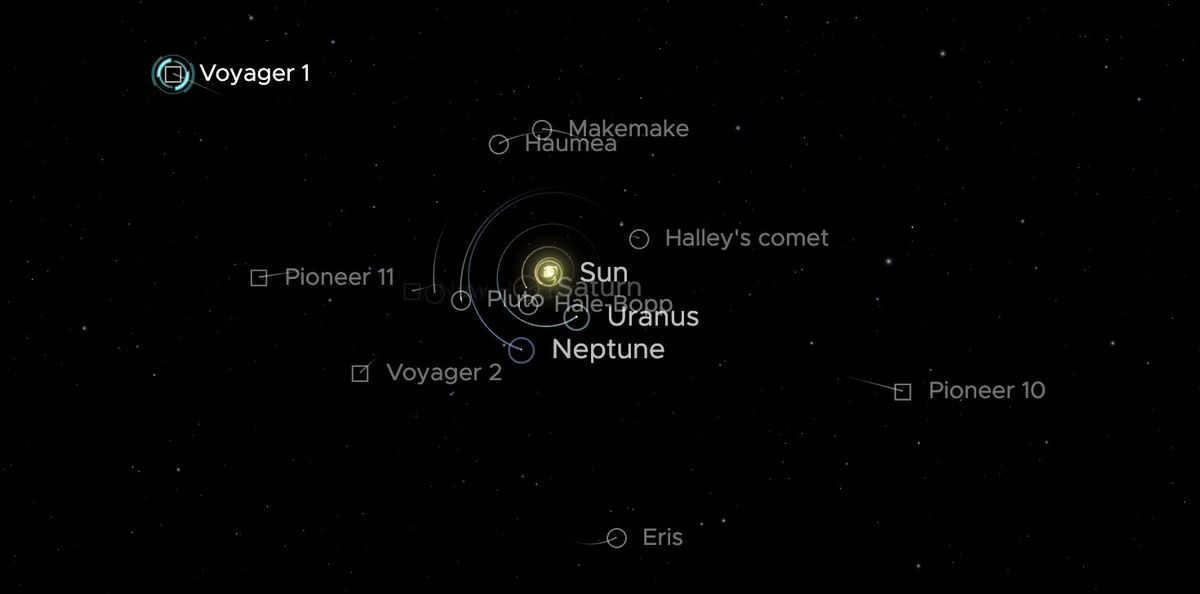
This is a comparison of Voyager 1’s position relative to Earth with the position of Voyager 2.
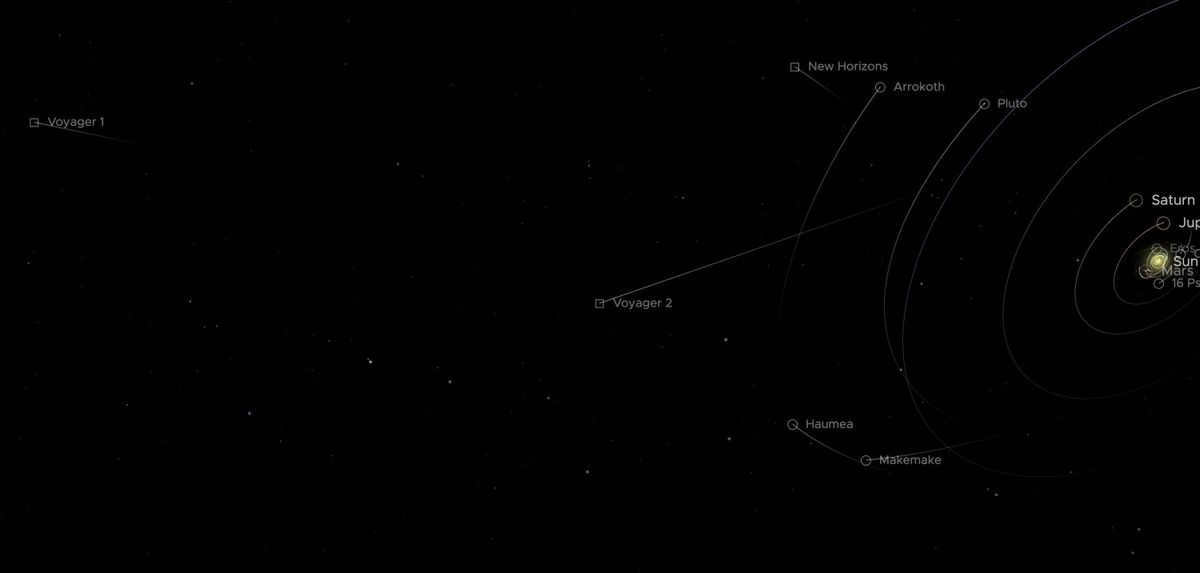
What Comes Next
The subsequent crucial phase in the association between Earth and Voyager 1 is the point when communication is lost. According to voyagersfinalmessage.com, which refers to information from the spacecraft’s internal power sources, we are approximately 700 days away from our final contact with Voyager 1.
Scientists indicate that Voyager 1 is currently depleting its fuel at a rapid pace. It may completely exhaust its fuel supply by the middle of the 21st century. However, Bill Kurth, an astrophysicist from the University of Iowa, states that NASA is currently striving to prolong Voyager 1’s operational capabilities until at least 2027. At present, only 4 out of the 10 primary instruments on Voyager 1 are active.
At a certain juncture, this event will inevitably occur, leading to Earth’s loss of communication with the probe. Subsequently, Voyager 1 will embark on a diplomatic endeavor, armed with encoded data including: a) Salutations in 55 different languages; b) Images capturing the Earth’s terrain. Furthermore, one can effortlessly track Earth’s whereabouts via its operational capabilities.
An American spacecraft is exploring the depths of outer space. It has recently ventured into a previously uncharted region.
The American twins
Launched in 1977, the Voyager 1 and Voyager 2 probes embarked on an epic journey through the galaxy. These remarkable spacecraft carry a message intended for extraterrestrial civilizations: golden plates containing music, photographs, recordings of natural sounds and laughter, as well as greetings in 55 languages, including Russian, and other information about life on Earth. The Voyagers are propelled by a speed of 56,000 kilometers per hour and are following separate paths on their interstellar odyssey.
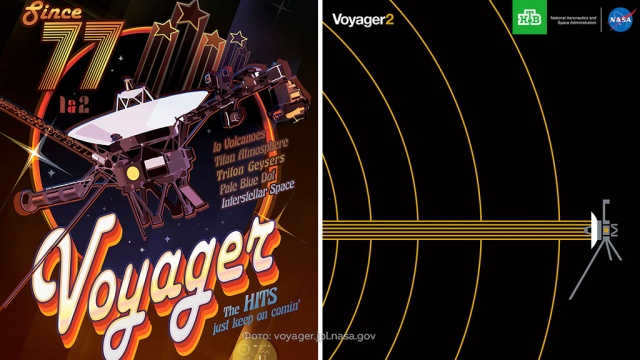
The original plan for the mission was to last for a duration of 5 years. The primary objective of both spacecrafts was to conduct research on the distant planets Jupiter and Saturn. However, they have surpassed all expectations. The probes have successfully completed orbits around nearly the entire solar system, setting new records for range and it seems like their journey is far from over.
With each passing day, the instruments on board the probes continue to transmit an increasing amount of data, enabling us to gain a deeper understanding of the vastness of the cosmos.
A trip to faraway planets
In January 1986, over 30 years ago, Voyager 2 arrived at Uranus, getting close to the planet at a distance of 81,500 kilometers. The spacecraft got as near as 71,400 km to Jupiter and 101,000 km to Saturn.
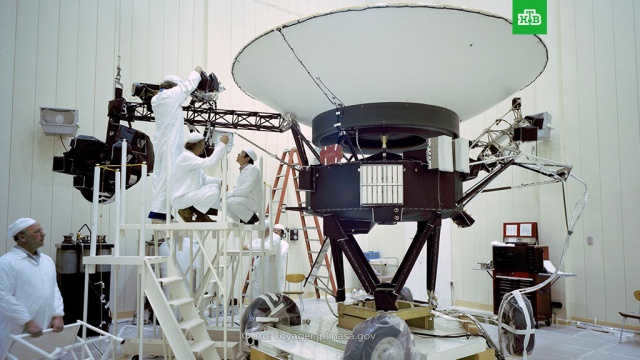

This groundbreaking mission marked the sole encounter with Uranus. Subsequently, the spacecraft revealed that the temperature at both hemispheres of this colossal planet is identical, despite only one being illuminated by the Sun. Scientists deduced that heat is transferred between different parts of the planet. On average, Uranus maintains a bone-chilling temperature of minus 214 degrees Celsius.
In August 1989, Voyager 2 made a momentous journey within 48,000 kilometers of Neptune, offering humanity an unprecedented close-up of the eighth planet in our solar system. This initial visit proved to be the final one, as no other spacecraft has ventured to Neptune since then.
The initiation of the Voyager interstellar mission was heralded by the successful completion of the Neptune flyby.
In November 2003, Voyager 1 reached the outermost region of the Solar System, known as the heliosphere, where the gravitational pull of the Sun no longer holds sway. This marks the boundary into interstellar space.
Exploring beyond our star system
After a long and remarkable journey, Voyager 1 officially departed the confines of the solar system in 2012. It now resides a staggering 22 billion kilometers away from our Sun.
In November 2018, Voyager 2 followed suit and exited the heliosphere, a protective shield of particles and magnetic fields generated by the Sun. This momentous event occurred at a distance of 18.2 billion kilometers from the Sun, well surpassing the orbit of Pluto. To put it into perspective, sunlight takes a mere 8 minutes to reach Earth, while Voyager 2 took approximately 16.5 hours to traverse the same distance.
In November 2019, a series of articles were published in Nature Astronomy detailing the observations made by scientists during and after the Voyager 2 spacecraft’s journey through the heliosphere. Each article focuses on a specific instrument used during the mission, including a magnetic field sensor, two particle recorders operating at different energy levels, and two plasma research instruments.
The data transmitted by the probe confirmed that it had entered a previously unexplored region of space. Similar to Voyager 1, Voyager 2 is now located in the perturbed transition region beyond the heliosphere.
Based on the probe’s data, it was determined that both the heliosphere and interstellar space contain plasma, although the plasma in interstellar space is colder and denser. Additionally, cosmic radiation is present in this region.
According to NASA, the findings have contributed to the understanding of the cosmic shoreline, which is the point where the Sun’s environment transitions into the vast expanse of interstellar space. Additional information gathered by Voyager 1 revealed that the heliosphere shields the Earth from approximately 70% of interstellar radiation. Furthermore, Voyager 2’s observation of a significant radiation surge confirmed the existence of a boundary between the heliosphere and interstellar space.
The conclusion of the journey
Both spaceships are fueled by atomic batteries, however, their heat generation decreases with each passing year. It is estimated that by 2025, the heat production will decrease to only 68.8% of its original level.
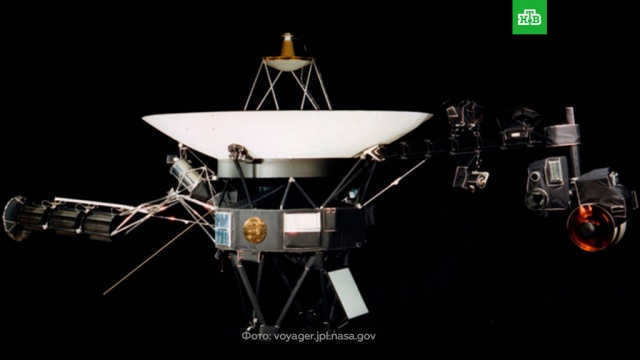
Once the batteries cease functioning, the probes will commence floating in the vastness of outer space.

In the year of 1977, precisely 40 years ago, Voyager 1 embarked on its journey through the vastness of space. Despite being launched after its twin, Voyager 2, Voyager 1 managed to surpass it and became the first spacecraft to venture beyond the boundaries of our solar system.
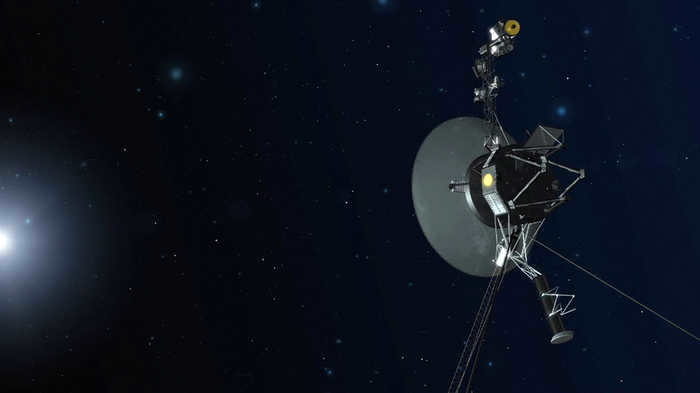
Despite the passing of time and the many changes that have occurred on Earth, Voyager 1 continues to soar through space. While the Soviet Union fell, and new leaders came and went, Voyager 1 remained steadfast in its mission. Originally designed for a five-year journey to explore Jupiter, Saturn, and Titan, the spacecraft has far surpassed its intended lifespan.
The incredible distance Voyager 1 has traveled is truly mind-boggling. Currently located approximately 20 billion kilometers from Earth, it has traveled a distance equivalent to flying from Moscow to New York almost three million times. With a remarkable speed of 60 thousand kilometers per hour, Voyager 1 could cover the same distance to New York in just eight minutes.
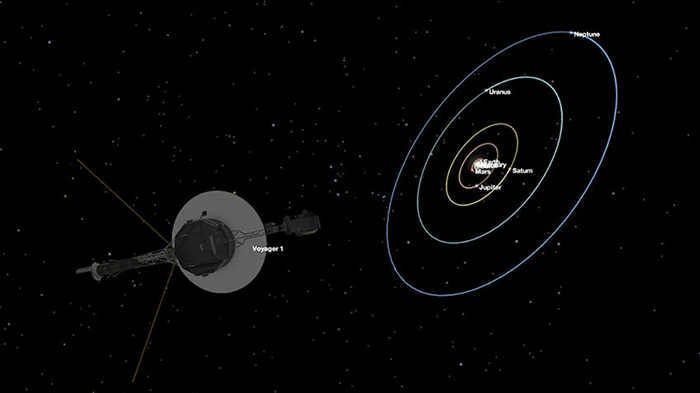
Scientists are maintaining contact with Voyager 1, with the signal to the spacecraft currently taking 19 hours 20 minutes and 51 seconds to reach its destination, and this time is gradually increasing. The spacecraft is still transmitting data from its magnetometer, charged particle detector, and cosmic ray detector, as these instruments remain operational. However, other instruments, such as the cameras, have been turned off either due to malfunctions or to conserve power.
In February 1990, Voyager 1 sent back some of its final images to Earth. The most well-known of these images is the one that has become known as the “Pale Blue Spot.” This photo captures the Earth from a distance of six billion kilometers using a camera capable of reading a newspaper headline from 800 meters away. In the image, the Earth appears as a tiny dot against a brown background.
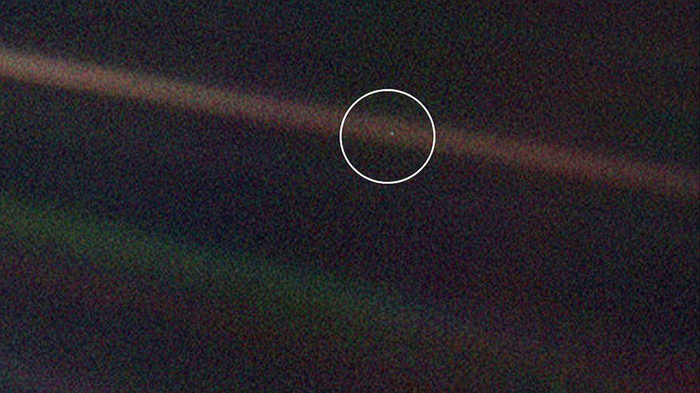
Voyager 1 is equipped with a gold-plated plate affixed to its hull, which bears a message intended for extraterrestrial beings. This plate features a greeting in 50 different languages, as well as recordings of classical music, music from various cultures around the world, and sounds from nature. Additionally, analog photographs of humans, the Earth as seen from space, aircraft, cars, and various written notes were included on the record as a means of communication with potential alien civilizations.
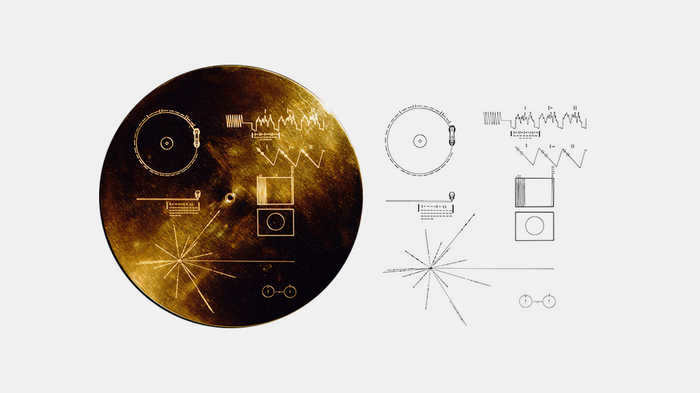
14.9K posts 45.3K subscribers
Community Guidelines
What regulations can be established in this forum, aside from those defined by the peekaboo itself 🙂
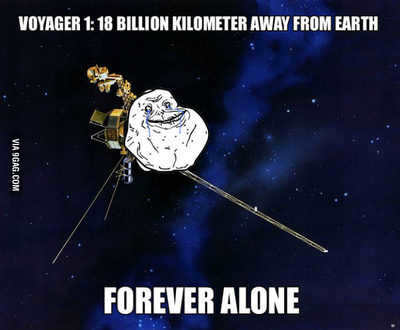
That’s the essence of it – not soldering, but the act of securing wires with mechanical means! 🙂 Indeed, those components were not joined with solder, but rather attached by screwing them together.
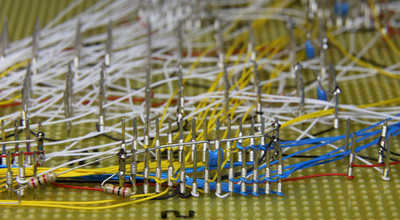
“Leonid Brezhnev passed away, while Voyager 1 soared through the skies.” “The Soviet Union crumbled, and Voyager 1 continued its journey. Boris Yeltsin came and went, Vladimir Putin arrived, and Voyager 1 continues to travel through space.”
Let us raise a glass to the idea that our lives will be as enduring and steady as the ongoing voyage of Voyager-1.
When the decision was made to include the language of Native Americans, specifically Indians, in the greeting spoken in 50 different languages, the delegation was met with laughter. However, they still took note of the request. As Voyager continued on its journey, one scientist couldn’t help but have doubts. He decided to take a copy of the record and seek an accurate translation from another Indian. This person also laughed, but assured the scientist that it was indeed accurate. Finally, the scholar approached a historian-philologist who specialized in Indian languages. After listening to the recording, the specialist provided the translation: “Beware of these pale-faces, space brothers! They are coming to take your lands!”
A Journey Through Space
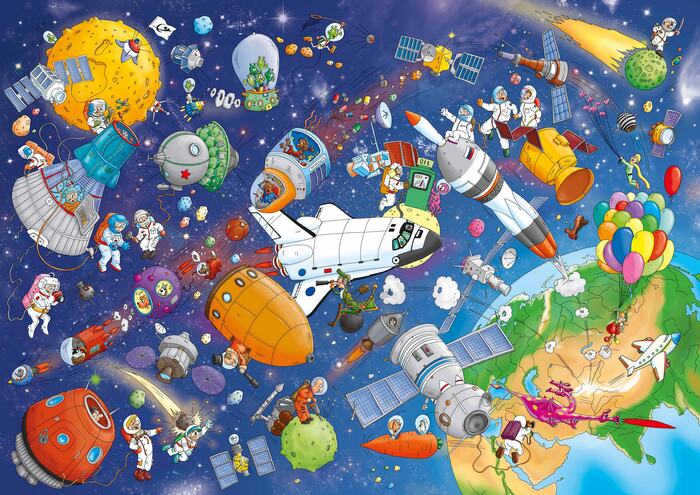
Being someone who was born on April 12, spent two years at the Baikonur Cosmodrome, and is an avid fan of space fiction, I have a deep passion for drawing space-themed artwork. Therefore, this particular puzzle for Hatber revolves around the concept of space. As always, there are numerous hidden references and Easter eggs to discover – keep an eye out for them! My son played a significant role in helping me come up with ideas for this piece.
Over the next week or two, I will be incredibly busy with a heavy workload, so please bear with me if I am unable to post regularly. However, I will still be available to chat and engage, so feel free to reach out. Your feedback and criticism are always appreciated.
As usual, don’t hesitate to drop by, leave a message, and share your thoughts.

Astronomical Observers from Another Galaxy
Imagine if extraterrestrial life exists on the exoplanet closest to us, located within our habitable zone, and its residents possess technology equal to our own. If these beings were to observe our star at this very moment, what would be their perspective?
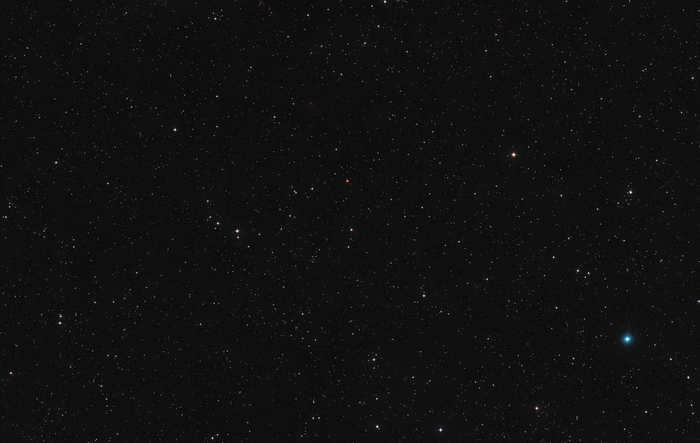
This image does not provide any clues about our Sun being a habitable star system. It is just one of the many dots in this image. Interestingly, the orange dot positioned slightly above the center is a star called Ross 128, located at a distance of 0.11 light-years from our Sun.
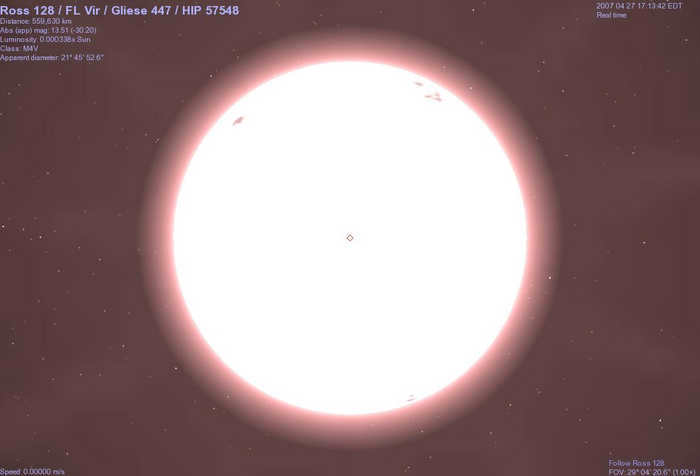
This is a tiny and isolated star, a faint dwarf with a weight of just 0.15 solar masses. However, it is extraordinary due to the presence of an exoplanet, Ross 128 b, orbiting around it. What makes it even more fascinating is that this exoplanet is located within the habitable zone, where all the necessary conditions for the emergence of organic life are present! The following image depicts the artist’s interpretation of this star system:
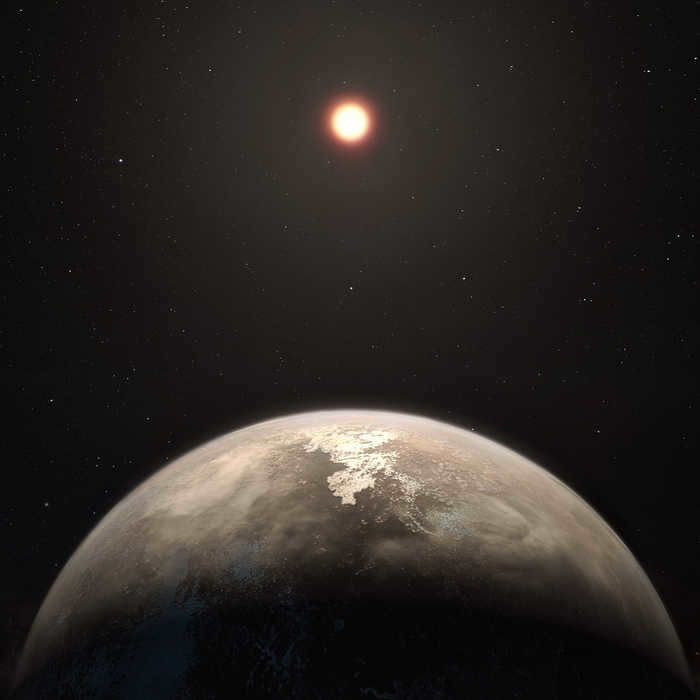
The star of this exoplanet completes a full revolution in just 10 days, and the planet itself experiences temperatures ranging from -60 °C to +21 °C. These conditions could potentially support the existence of liquid H2O, which is essential for sustaining life as we know it on Earth!

However, let’s shift our focus to our extraterrestrial astronomers. Let’s suppose that there are astronomers similar to us residing 11 light years away from our location. If they were to observe our sun through regular telescopes, they would not witness anything extraordinary. Nevertheless, what about our radio transmissions? The film Contact has led us to believe that aliens are avidly listening to our radio broadcasts.
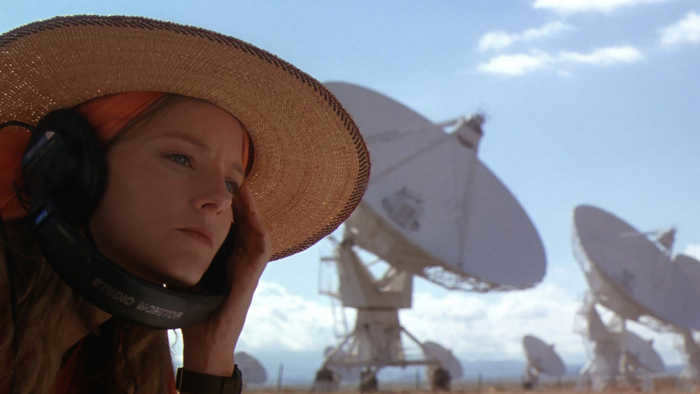
Regrettably, it is highly improbable. Additionally, the issue of distance arises. The distances are extremely vast. All radio and TV signals transmitted within the past century have been diminishing in the vastness of interstellar space. To ensure that a TV signal reaches Ross 128 b, an immense amount of money and energy would be required to operate an amplifier for that particular signal.
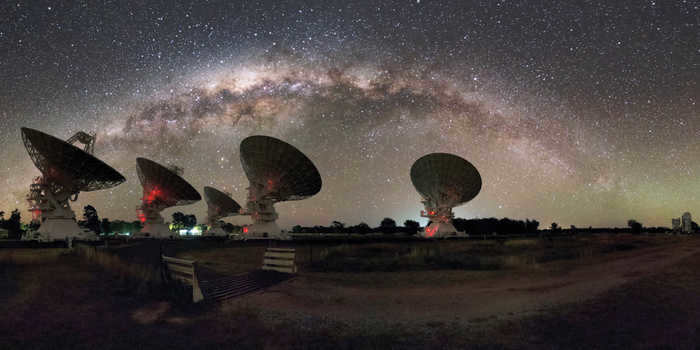
However, it is highly improbable that the residents of a different planet would have any interest in tuning into our political shows or purchasing the products being advertised, thus rendering such an endeavor highly inefficient.

As our technology continues to advance, the number of radio signals being transmitted into space is diminishing. This is due to the increasing use of cable TV and the laying of large fiber-optic cables on the ocean floor. However, there is no need to be concerned that extraterrestrial beings will be unable to view our television broadcasts. These radio signals are not the most powerful signals being emitted from Earth. They have been surpassed by the radar beams used in early warning systems.
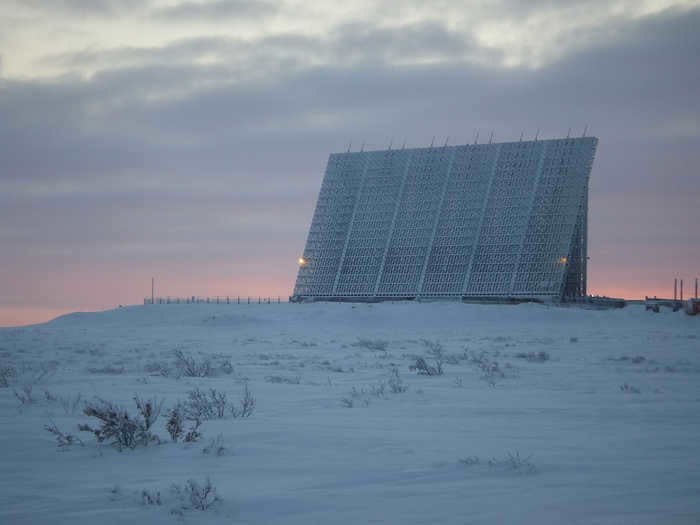
These networks were created during the Cold War era and consisted of a collection of both ground-based and airborne stations. These stations emitted strong beams of energy into the atmosphere constantly, with the intention of detecting any potential enemy activity by observing the echoes of these signals. The signals would often bounce off the ionosphere, providing valuable information to those monitoring the systems.
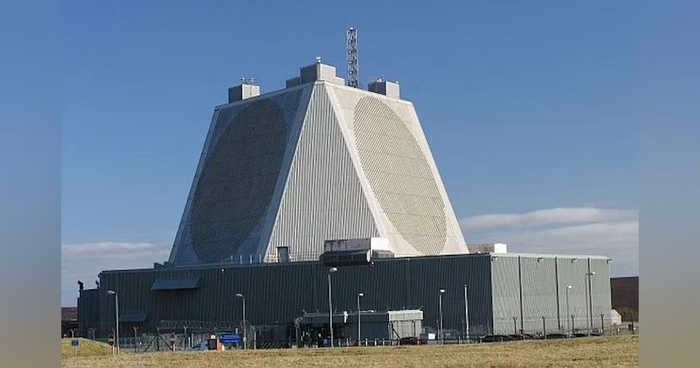
These signals produced by radar were dispersed into the vastness of space and potentially intercepted by neighboring exoplanets, provided they were in the right position to detect the beam traversing through their portion of the celestial sphere. However, numerous variables would need to align for such an event to occur.
Recall the Arecibo Observatory?
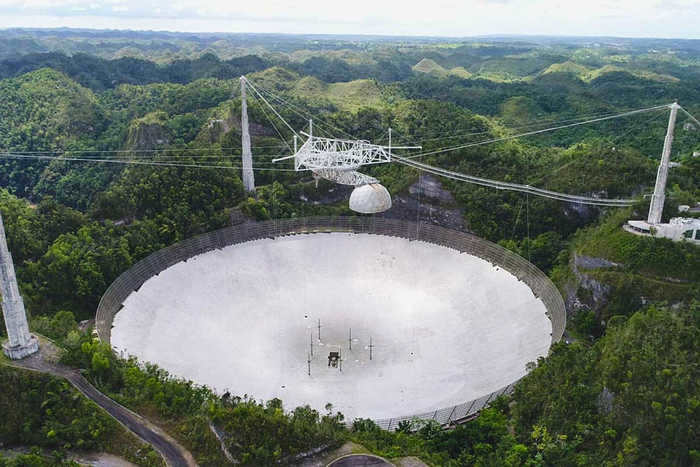
The gigantic dish located in Puerto Rico has the ability to operate as a radar transmitter, sending out signals that bounce off objects in close proximity such as Mercury and the asteroid belt. In essence, it serves as a powerful beam of light that we utilize to illuminate planets and enhance our ability to observe them.
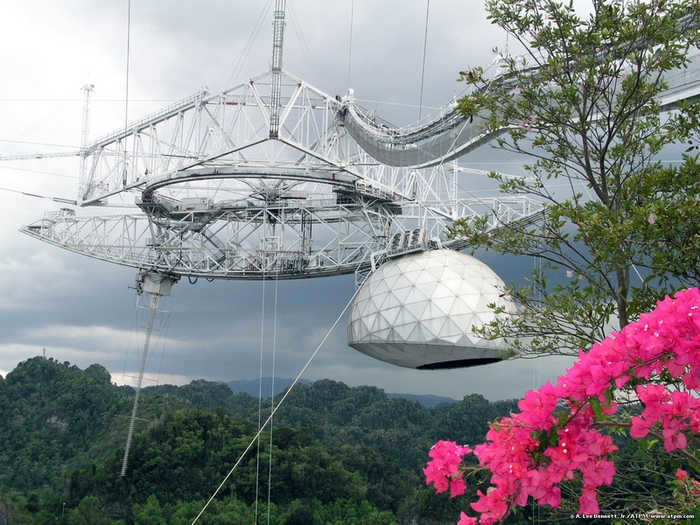
In the past, this immense transmitter used to emit a signal intermittently and in a narrow beam. If, by some stroke of luck, an exoplanet happened to intercept the beam, and the receiving antenna on that planet happened to be directed precisely towards us, all they would detect is a brief burst of radio frequency energy followed by silence (similar to the WOW signal).

Indeed, we have not forgotten the Arecibo Message, which was transmitted on November 16, 1974 towards the globular star cluster M13 situated 25,000 light-years distant in the constellation Hercules.
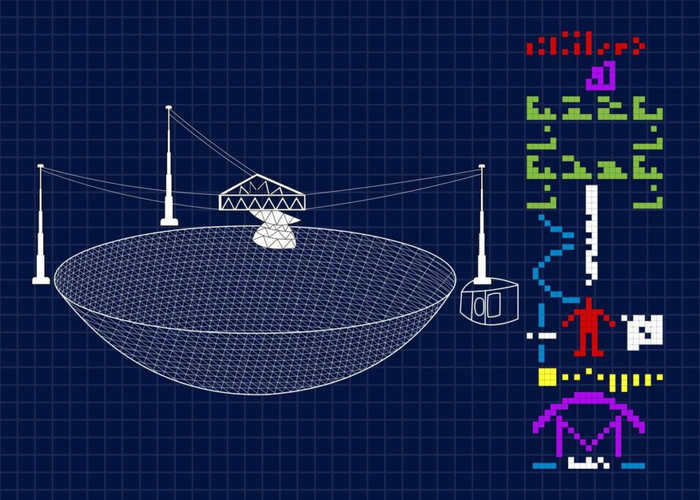
The signal lasted for a duration of 169 seconds. This implies that in order to receive and decode the signal accurately, both antennas would need to be precisely pointed towards each other. However, due to the rotation of the planets and the vast distances involved, this is not practically feasible. Therefore, if hypothetical aliens on the planet Ross 128 b were observing Earth, they would not be able to intercept us using radio antennas.
However, let’s switch our attention back to visible light. From a distance of 5.9 billion kilometers, our Earth appears like this:
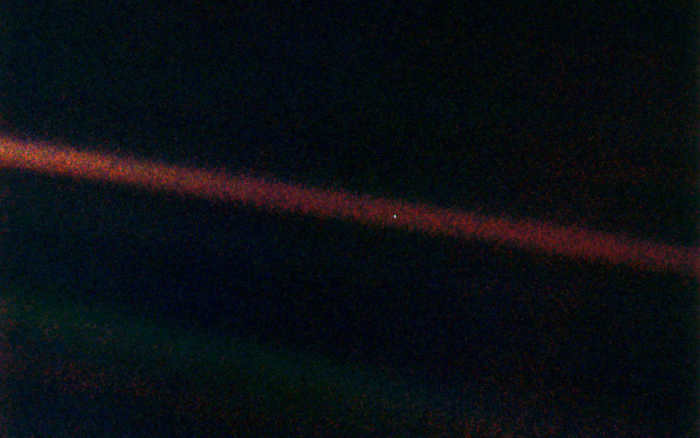
The Sun is incredibly luminous and its radiance illuminates the Earth. A portion of this luminosity is reflected back into outer space, creating what is known as “Earthshine”. Another portion of the radiance comes close to our planet and traverses through our atmosphere before continuing its journey towards the distant stars. Both of these phenomena can potentially be observed from an exoplanet. Currently, we are utilizing this mechanism to gain a deeper understanding of the atmospheres present on exoplanets.
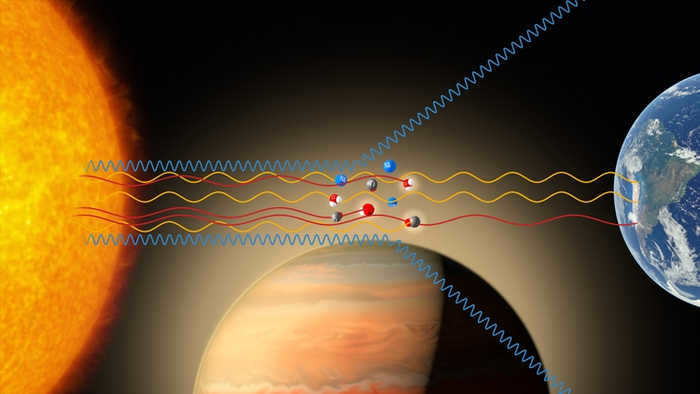
The findings of the extraterrestrial beings from Ross 128 b will not provide us with any direct insights into the human race. However, if they had been monitoring Earth for a considerable period of time, they would have acquired extensive knowledge about our atmosphere by examining its reflectivity. It is highly likely that they would have discerned the patterns of our water cycle and deduced that there is something peculiar about our oxygen-rich atmosphere. This is similar to the enigmatic characteristics of the gas giant WASP-39 b:
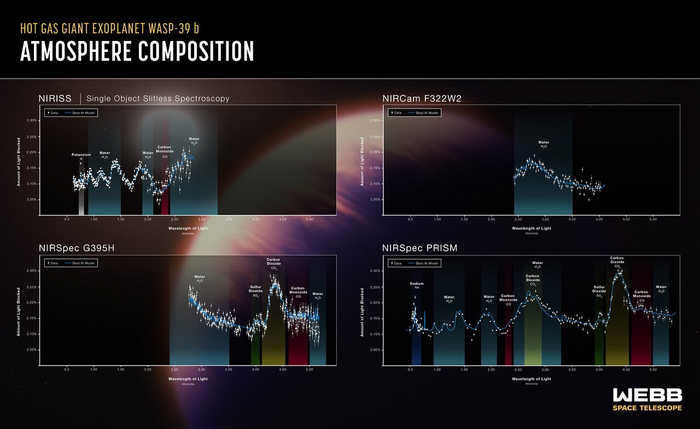
Ultimately, it is possible that the most distinct indication from our planet may not originate from humanity itself, but rather from the seaweed that has transformed our world over countless millennia and alters the transmissions we emit into the cosmos.
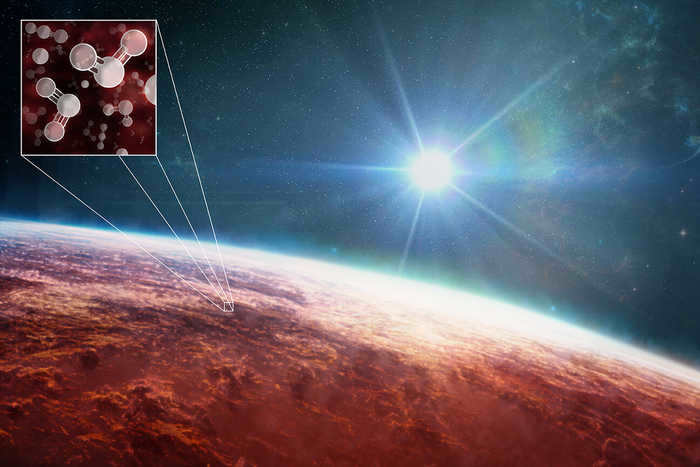
If we desired to transmit a more distinct message, we would have the capability to do so. However, transmitting a radio signal presents a challenge: the intended recipient must be attentive to it upon its arrival. In simpler terms, the extraterrestrial beings must possess a receiving antenna constantly pointed in our direction.
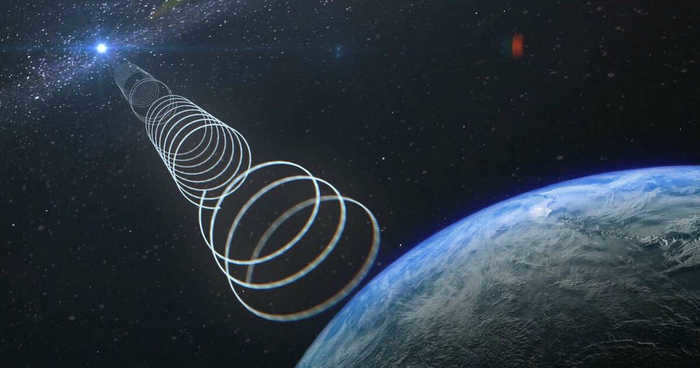
However, there are alternative methods to capture attention. By utilizing ion engines, a pulsed nuclear engine, or by strategically utilizing a gravity slingshot, we have the potential to dispatch a probe from our solar system to Ross 128 b at a velocity that would allow it to arrive within a few tens of millennia. If we can develop a guidance system capable of surviving such an arduous journey (which will undoubtedly present its challenges), we would possess the ability to travel to any habitable planet.
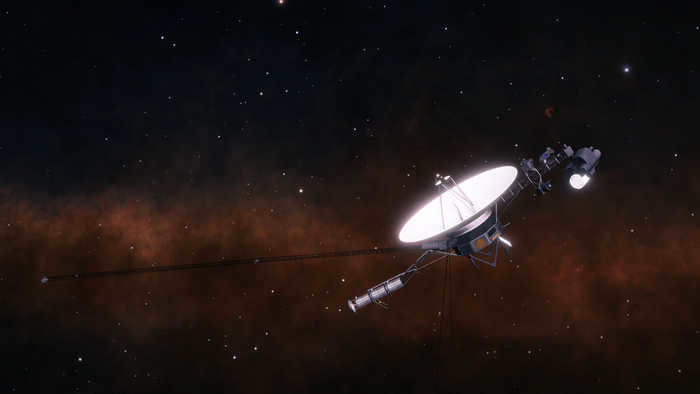
Indeed, to land, we would require additional fuel. However, the main objective is for them to locate us, isn’t it?
P.S. I have been closely monitoring the recent happenings on peekaboo. Initially, there was a revolution where everyone was accumulating ratings and achievements through meaningless posts. Then came the optimization, displaying only the number of pluses. Unfortunately, many talented content creators have left. As for me, I will remain on peekaboo for now and continue sharing my thoughts on my observatory and space, targeting those who are interested. I blog about the observatory on Telegram, as I believe the content is more specific for that platform. I extend my gratitude to all who have stayed and continue to produce intriguing author content.

Shadows on Mars
The transmission from the colonist base on Mars has abruptly ceased. Communication was disrupted after a worker at the base stumbled upon frozen bacterial spores, known as “Martian mycelia,” during a routine excavation in the canyon. In response, a rescue team has been urgently dispatched from the lunar spaceport to the crimson planet.

A small giant of the vast expanse of space. Centaur upper stage
What comes to mind when you mention the “Symbol of the space program of the United States”? The most powerful Apollo-Saturn-V complex ever launched, the only one that succeeded in carrying humans beyond the confines of Earth’s gravity? The magnificent Space Shuttle, the first truly reusable spacecraft? In essence, yes. However, these achievements would not exist, or they would have been very different, if it were not for him – a diligent little worker who shouldered NASA’s primary scientific program at the beginning of the journey into space and continues to serve faithfully for nearly three-quarters of a century.
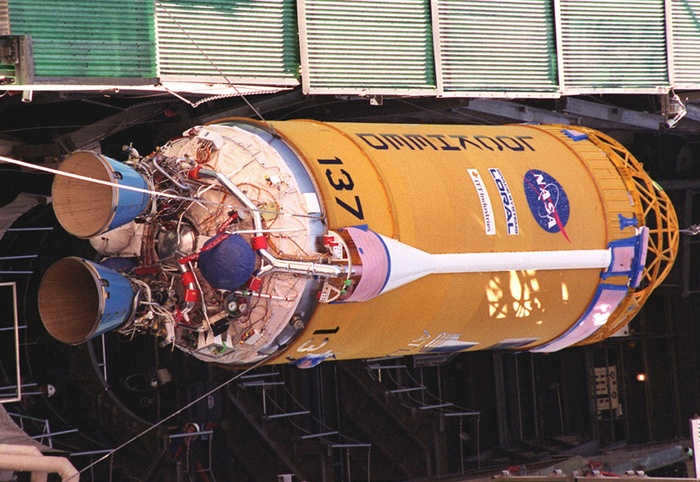
When observing his story, one could be inclined to believe that the wise old man Vrungel was correct, that the name of a boat determines its fate. Centaur serves as NASA’s dependable workhorse, fulfilling the crucial task of providing the final acceleration for the payload. Moreover, it acts as an effective manager, capable of independently overseeing the entire rocket journey, starting from detachment from the launch pad and continuing until the payload separates and embarks on its own, sometimes lengthy journey that can span decades. This combination of roles is reminiscent of the mythical centaur, which merged human and equine qualities.
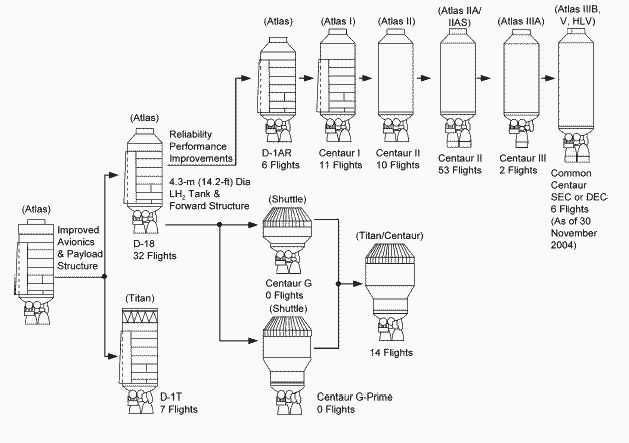
When it comes to engines, one cannot overlook Centauri and its remarkable RL-10 engine, a true masterpiece engineered by Rocketdyne. This engine, which operates on the phase transition cycle, is not only highly efficient, but also surprisingly uncomplicated.
It is common knowledge that increasing the pressure in the combustion chamber leads to a more efficient engine, assuming all other factors remain constant. The most effective way to raise this pressure is by using a pump to inject fuel components into the combustion chamber. Of course, the pump needs to be powered by something, and the lightest option (which Tsiolkovsky’s formula strongly suggests) is a turbine. However, a turbine requires gas to function, and it is preferable to obtain this gas from a source. A conventional open-cycle engine achieves this by burning a portion of the fuel in a separate combustion chamber, using the resulting gas to drive the turbine, and expelling the exhaust gas. This is how engines like Muskovo Merlin operate. The drawbacks of this approach are evident – it adds extra weight from the gas generator and carries a small risk of explosion. Additionally, the turbine must be designed to withstand high temperatures since the working fluid reaches hundreds of degrees. Yet, all rocket engines require a cooling mechanism for the nozzle because no materials can endure the extreme temperatures produced by the chemical reaction in the combustion chamber. This led to the question – why not utilize this heat to warm up the gas that powers the turbine? This is the concept behind an engine that operates on the phase transition cycle. In this cycle, extremely cold liquid hydrogen (only 20 degrees Kelvin, just 20 degrees above absolute zero) is routed through tubes wrapped around the nozzle. The gas warms up in this process, absorbing heat from the nozzle and increasing its temperature by hundreds of degrees, as well as expanding significantly to boost the pressure. This “hot” gas is then directed to the turbine. It is worth noting that the term “hot” is relative, as it refers to a temperature of a couple of hundred degrees Celsius for us. However, for the turbine material, this gas is considered very cold, considering that an ordinary car turbine is operated by gases exceeding 800 degrees. Consequently, the turbine can be designed to be simple and relatively inexpensive. Additionally, the engine has a built-in limitation on maximum thrust – the nozzle area can only heat a specific amount of gas to operational temperatures. If more gas is introduced, its temperature and pressure will decrease, resulting in the turbine generating less power and the combustion chamber receiving insufficient oxidizer. Thus, the engine is technically incapable of reaching its pressure limits. This demonstrates the effectiveness of negative feedback.
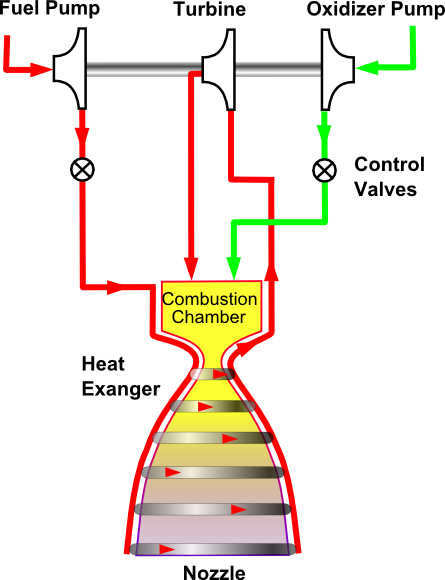
However, what is the purpose of utilizing these closed-cycle engines and intricate turbopumps that operate under extreme pressures and temperatures? There exists a more convenient and uncomplicated scheme1.
Regrettably, a rather unpleasant statute becomes applicable. It is known as the square-cube law. In order to augment the quantity of heated gas, the area of the nozzle must expand at a faster rate than the engine power. Consequently, the point of equilibrium at which the phase transition arrangement matches the conventional arrangement in terms of mass efficiency is approximately 9 tons of thrust. Anything exceeding that is already more efficient in gas-generator turbopump schemes. RL-10 lies right on the edge. Depending on the modification – ranging from 6800 kgf in the earliest versions to 11.2 kgf in the most recent iterations, in which numerous techniques were employed for maximum thrust. Another advantage of this engine is its resistance to contamination. An experiment was conducted – pieces of cladding were poured into the tank – and the engine operated successfully on the test stand. For gas generator engines, the introduction of foreign objects into the gas generator results in an explosion in 95% of cases.
The Centauri has enjoyed a remarkably long lifespan thanks to its successful engine, control system, and modular design. It is highly likely that this dependable workhorse will continue to transport payloads into space many times in the future.
